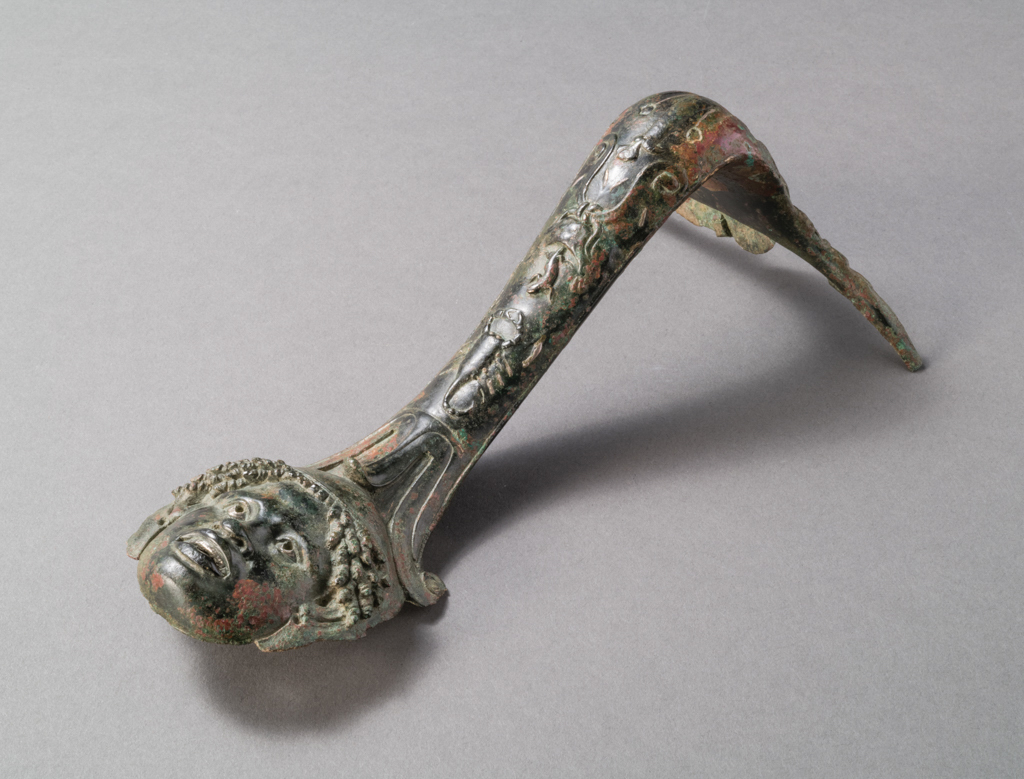This elegant figural handle from a bronze pitcher characterizes the Roman province of Africa, also known as Africa Proconsularis, through a series of symbols. The province encompassed parts of modern Libya, Tunisia, and Algeria. The ornate decoration of this handle has led some scholars to identify it as Alexandrian in style and probably produced during the early Roman Imperial period, most likely during the 1st century CE.
At the top, a woman personifies the province itself with multiple signs of the fruitfulness and abundance of the region, which was an important grain producer for the Roman Empire. She wears an elaborate two-part headdress. One portion is an elephant head, complete with ears, trunk, and tusks (a symbol known as exuviae elephantis), known from other personifications of Africa. The second part consists of a central modius (a flat-topped cylinder used as a grain measure and also as a symbolic headdress) and shafts of grain. The ends of her hair turn into leaves and pomegranates, further denoting the fertility of the region. The head at the other terminus of the handle represents a Black African man wearing a helmet, possibly representing the military power of the area. In between the two heads are three additional symbols: a pair of knotted ribbons, a lizard, and a scorpion. The two animals are common in North Africa and, particularly the scorpion, are associated with the land in other depictions, such as those on coins. The knotted ribbons are most likely a Herculean knot, representing the fact that the royal families in the region traced their ancestry to the ancient hero Hercules. Furthermore, the knot was believed to have protective properties in the Roman world.
Bronze, or more accurately copper alloy, vessels were a luxury object. Some details on the handle, including the eyes of the two figures and the legs of the scorpion, are emphasized with inlaid silver, underscoring the opulence of the once-complete piece. Today only the handle survives, possibly the result of the fact that bronze objects were commonly melted down to reuse the material.

